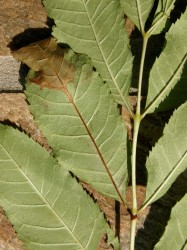What is Chalara ash dieback?
The BBC has recently published a very polished article regarding Chalara Ash Dieback and the dangers this country faces because of this disease. The important point to note is that it poses a real-and-present danger to the nation’s population of 80 million ash trees.
Is this another Dutch Elm Disease?
 Unfortunately, at this time we just don’t know. With Dutch Elm Disease we have found that the elm is still surviving in hedgerows and woods, but it tends to grow to a certain size and then it gets attacked and dies back again. We don’t know if this is the case with ash dieback, whether once the tree is dead that is it and there is no survival in the roots where regrowth could happen.
Unfortunately, at this time we just don’t know. With Dutch Elm Disease we have found that the elm is still surviving in hedgerows and woods, but it tends to grow to a certain size and then it gets attacked and dies back again. We don’t know if this is the case with ash dieback, whether once the tree is dead that is it and there is no survival in the roots where regrowth could happen.
Symptoms of Chalara Ash Dieback
- Diseased saplings typically display dead tops and side shoots.
- Lesions often found at base of dead side shoots.
- Lesions on branch or stem can cause wilting of foliage above.
- Disease affects mature trees by killing off new growth.
All of our native trees are important for biodiversity, for providing habitats for our native wildlife – some species unique to particular types of tree – and for the health and well being of our nation.
If you are concerned about the effect of this disease please contact us. A source of concern is that landowners worried about tree disease may perceive the risk of planting trees too great, actually leading to a reduction in tree planting and a decline in the UK’s woodland overall. Given that the UK is already one of the least wooded countries in Europe, and what we know about the public’s love of woodland and all the health and economic benefits associated with it, this would be a catastrophe for all concerned.
